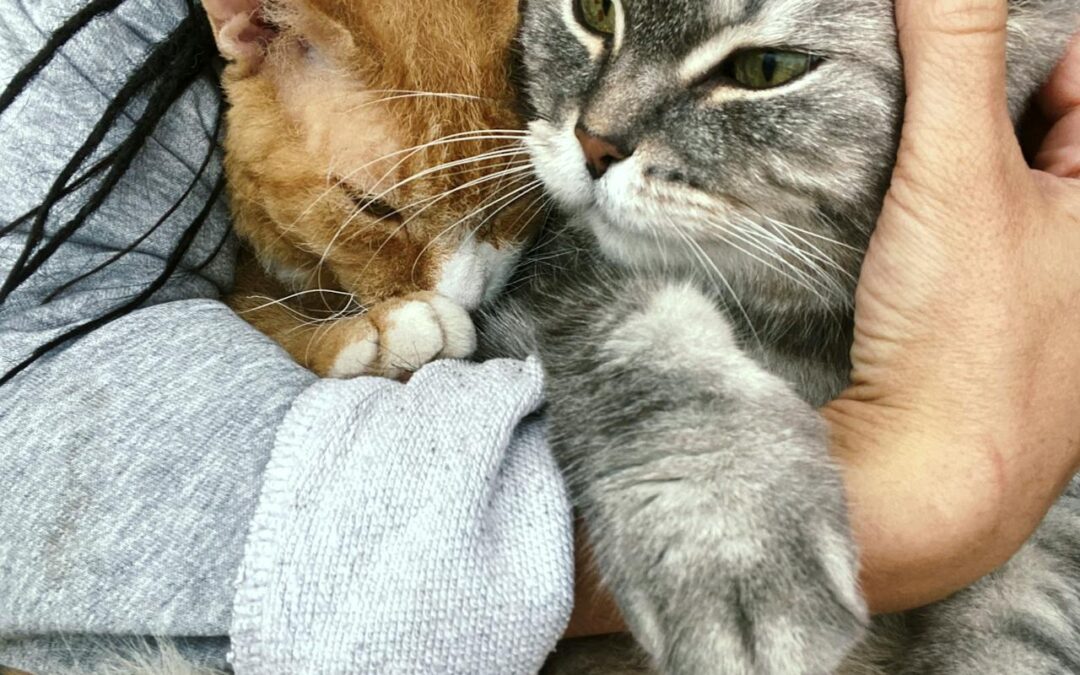With so many animals waiting in shelters and rescues for their forever home, the need is great for foster homes. Taking a dog or cat into your care for a short time can be an excellent way to help them transition to family living, and to free up shelter space for more animals in need. Here’s why.
Offers a safe space
Shelter living can be noisy and stressful for certain dogs and cats, even in the most exemplary shelters. In contrast, a family home offers a much more comfortable living environment. A soft pet bed or spot on the couch that a shy, stressed-out dog or cat can call their own will help them feel secure and let them know they’re loved and cared for.
A sense of safety is necessary for dogs and cats that are healing after abuse, injury, sickness, or neglect. Many of these pets have had a hard life, so living as part of a family until they’re adopted can provide just the support they need to heal.
Furthermore, a foster parent will have more time than shelter staff to give one-on-one attention. This can lead to better mental health for the animal and faster diagnosis and care of physical illnesses that may otherwise be overlooked.
Provides room to roam
Living in a house or apartment is an improvement over the confines of an animal rescue facility. Caring staff do their best to make sure that dogs have outdoor time and cats have access to interesting and stimulating play areas. However, with so many creatures to care for, and with the animals’ safety a priority, shelter animals usually have less room to roam.
Pets taken in by foster volunteers have more room to stretch their legs. Dogs can enjoy running around in a backyard and more regular visits to the dog park. Cats can have the run of the home and find their own favorite locations to watch the birds outside or curl up for a nap. Not only is having such room to roam good for a pet’s physical health but it also benefits their emotional well-being.
Supports animals recovering from injury or surgery
When an animal has been treated for an injury or has had an operation, a foster situation can be the best option for a swift recovery. These animals may require multiple doses of medicine every day or special physical therapy routines to heal, and a foster caregiver is better equipped to provide this individualized attention.
Similarly, canines and felines with special needs are best looked after by foster parents until they’re ready for a permanent home. Not everyone is open to adopting a pet that has physical limitations or requires additional care. Giving such animals a good start in life is something fostering can do.
Reinforces good behavior
Foster families have the time and interest to spend with an animal who needs socialization, training, or a little polish on their manners. Some felines and canines in shelters are rescued from difficult situations and have survived deplorable conditions. They may have been kept in overcrowded cages or kennels without proper nutrition or veterinary care. Some have been physically hurt by their owners. Others have been ignored.
With such a challenging background, animals coming into care may have trouble trusting people. They might have behavioral problems like anxiety or aggressive reactions, while others simply haven’t been trained. Over time, the positive daily interactions that these dogs and cats have with people in a family can reinforce consistent good behaviors and help them become more confident and sociable.
Provides special care for young animals
Young kittens and puppies are more vulnerable to disease because their immune systems are not fully developed. The prospect of living with a foster family where there are fewer other animals means they’ll be exposed to fewer viruses and bacteria while their body builds up more resistance to infection.
Additionally, kittens need constant monitoring round-the-clock when first born. This is a vulnerable time for young felines. The time and attention of foster parents can make all the difference in whether they survive.
Makes more room at shelters
One of the best reasons to foster is because it frees up shelter space so they can take in more dogs and cats in need of a home. There are always more cats and dogs that need care and keeping, so taking in a foster pet can quite literally save lives!
Moreover, these facilities are typically non-profits that rely on donations, fundraising, and fees for veterinary or adoption services to sustain their operations. They must use their funds responsibly to ensure their continued operations. The ability to send a number of felines and canines to foster families is incredibly helpful for rescues.
Finally
In short, pet foster parents have a critical role to play in the care and rehabilitation of rescue animals. A dog or cat with access to a safe and healthy home environment is more likely to thrive. They’ll be well-adjusted and ready for adoption by their forever family before long. If you’d like to become a foster caregiver, contact your local shelter or animal rescue organization today.

